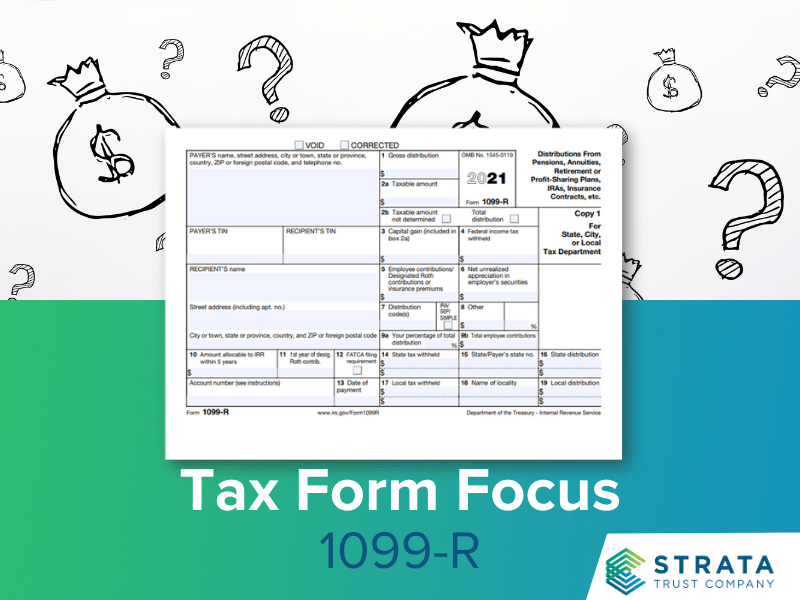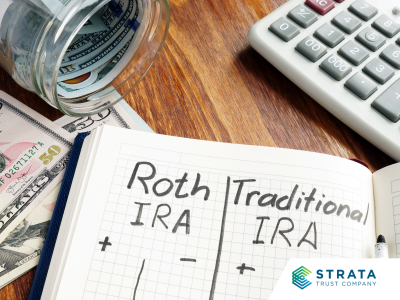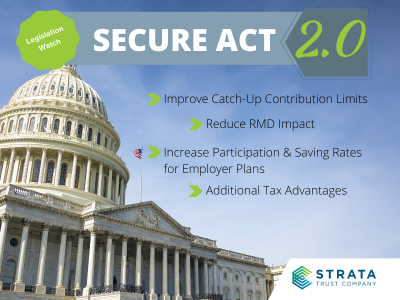As a self-directed IRA owner, you should monitor the tax forms related to IRA investing to ensure you’re receiving the tax advantages available to you. Our tax form focus series will help you break down key forms – one by one.
It is important, even if you engage a professional to prepare your tax returns or assist with your investments, that you review the information these forms report to make certain they are accurate. Accuracy is critical because these forms are sent to the IRS and can affect your tax liability for the year.
In the coming months, we’ll release installments in our Tax Form Focus series. This month’s edition focuses on Form 1099-R, Distributions From Pensions, Annuities, Retirement or Profit-Sharing Plans, IRAs, Insurance Contracts, etc.
Why Would You Receive A 1099-R?
If you took money or investments out of your employer-sponsored retirement plan or IRA in 2020, you should receive a Form 1099-R from your retirement plan administrator or IRA custodian by January 31, 2021. Typically, you must include the value of your distribution in your taxable income for the tax year, although there are certain exceptions. The IRS will receive a copy of your Form 1099-R and will use it to match up the taxable income and tax liability you report on your tax return, so it’s important to review your Form 1099-R and understand the information it is conveying to the IRS.
Let’s Review Your Form 1099-R
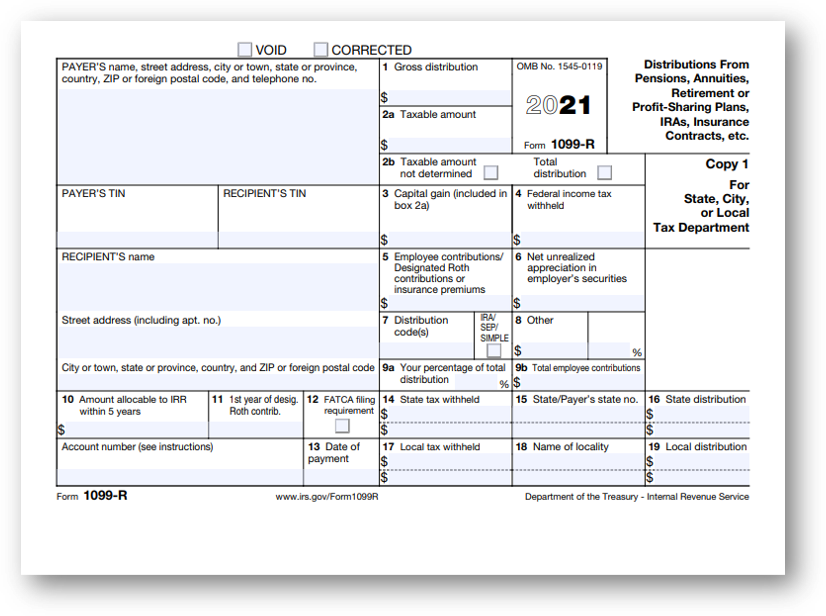
In addition to your name, address and Social Security number, Form 1099-R will contain the following information about your IRA withdrawal.
Box 1 – Gross distribution is the total amount distributed before any money is withheld for the prepayment of federal or state income taxes. This box reports amounts distributed to you but also amounts that are directly rolled over, converted or recharacterized.

Box 2a – Taxable amount is the portion of the gross distribution that is considered taxable income. Because IRA custodians do not keep track of an IRA owner’s nondeductible contributions to IRAs, this box will generally report the same amount as the gross distribution amount for Traditional, SEP, and SIMPLE IRAs. This box is generally left blank for Roth IRAs. For certain types of distributions, such as a direct rollover, conversion or recharacterization, the taxable amount can be determined, and a specific amount may appear here.
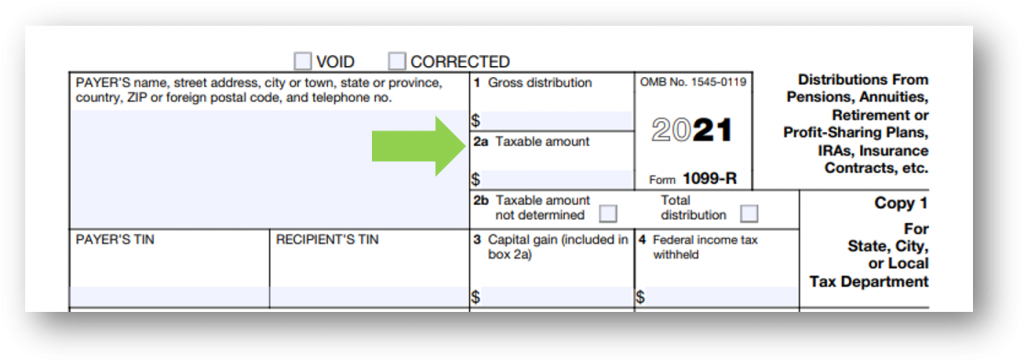
Box 2b – Taxable amount not determined is typically checked for IRA distributions because IRA custodians cannot track basis (or nontaxable) contributions to an IRA.
Box 2b – Total distribution may be checked if your withdrawal depleted and closed your IRA account.
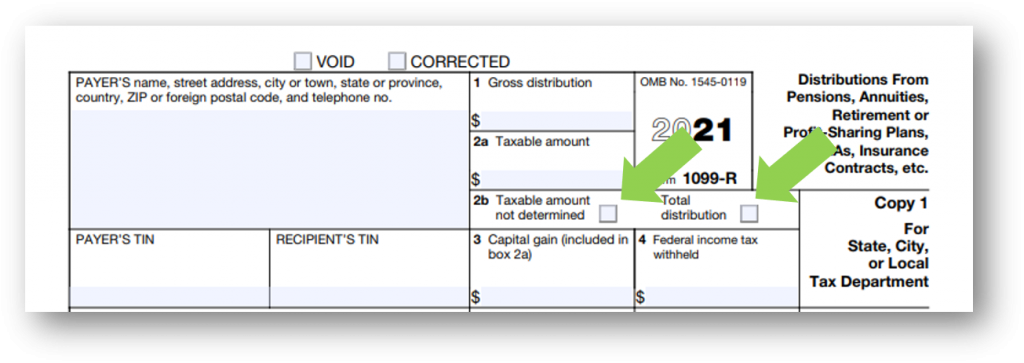
Box 4 – Federal income tax withheld is the amount withheld and sent to the IRS as a prepayment of federal income tax on the distribution. This box should be zero ($0), or a dollar amount that is 10% or greater than 10% of the gross distribution amount. Any amount withheld will reduce the amount of tax you owe when you file your tax return for the year. Roth IRAs are generally not subject to withholding.
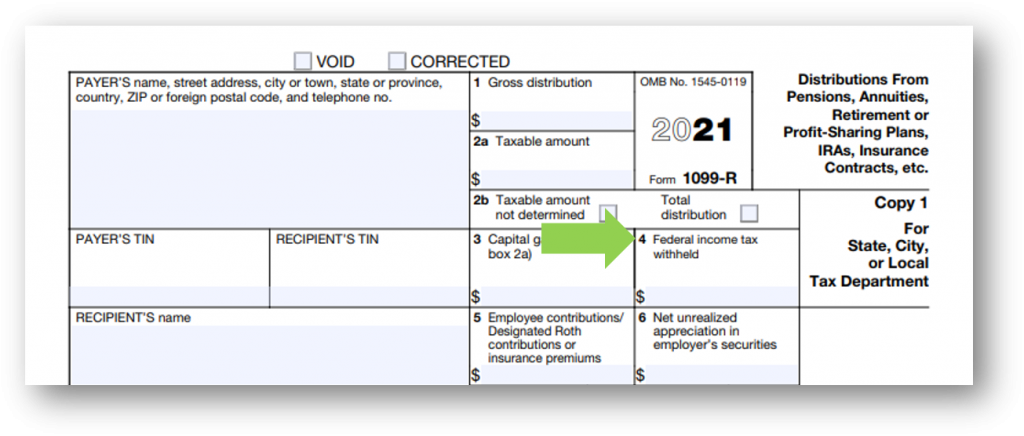
Box 14 – State tax withheld is the amount withheld and sent to a state treasury department as a prepayment of state income tax on your distribution. Some states require a specific amount of state tax to be withheld if federal tax withholding applies.
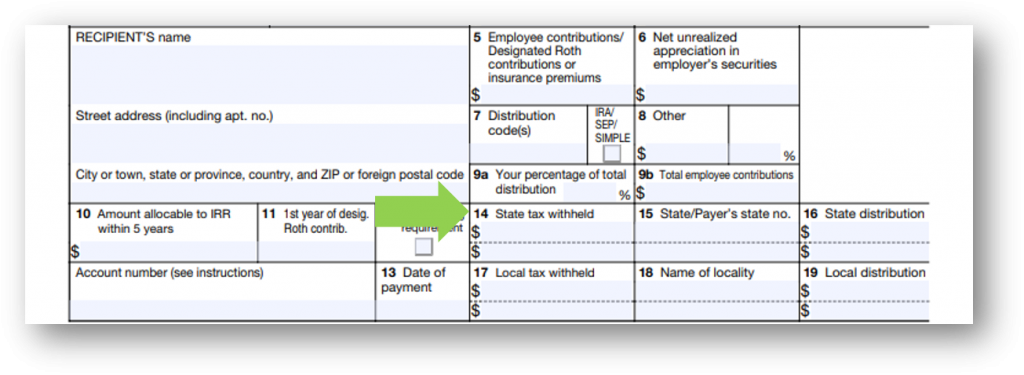
Box 7 – Distribution code is a number or letter that identifies to the IRS the type of distribution, which will determine whether the payout is taxable and subject to the additional 10% early distribution tax. For example, a code 4 is used for a beneficiary distribution from a Traditional IRA, which is taxable but not subject to the 10% early distribution tax. For some types of distributions, more than one code may apply. For example, codes 1 and 8 will be used to report the removal of an excess contribution from a Traditional IRA by an IRA owner younger than age 59½ – in this case, the earnings distributed are subject to income tax and the 10% early distribution tax. If the distribution code on your Form 1099-R conflicts with the taxable income you report on your tax return, the IRS may flag your return for further scrutiny.
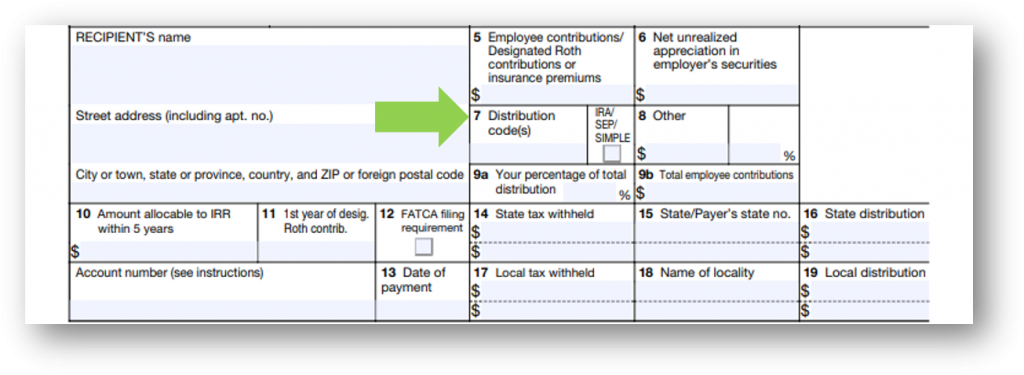
Here are the most common distribution codes used for IRA owners:
| Code | Definition |
| 1 | IRA owner was younger than age 59½ at the time of distribution & the 10% early distribution tax applies; or there may be an exception to the 10% early distribution tax but there is no specific code (e.g., distributions taken to pay for higher education) |
| 2 | IRA owner younger than age 59½ has one of the following exceptions to the 10% early distribution tax: direct conversion to a Roth IRA, IRS levy, substantially equal periodic payments |
| 3 | IRA owner meets the IRS’s definition of disability (an exception to the 10% early distribution tax) |
| 4 | Beneficiary takes a distribution after IRA owner’s death (an exception to the 10% early distribution tax) |
| 5 | Prohibited transaction has occurred (account is no longer an IRA and the taxable portion will be taxable to the IRA owner and subject to the 10% early distribution tax) |
| 7 | IRA owner was age 59½ or older at the time of distribution (10% early distribution tax no longer applies) |
| 8 | In 2020, IRA owner distributed an excess contribution made in 2020 (earnings are taxable for the year) |
| G | IRA owner made a direct rollover to a qualified retirement plan (a nontaxable transaction) |
| J | IRA owner was younger than 59½ at the time of distribution and Code Q or T does not apply (10% early distribution tax may apply to a taxable portion of the distribution) |
| K | Investment classified as a “hard-to-value asset” was distributed from the IRA |
| N | In 2020, IRA owner recharacterized an IRA contribution made for 2020 to another type of IRA (may have tax consequences but not a taxable distribution) |
| P | In 2020, IRA owner distributed an excess contribution made for 2019 (earnings distributed are taxable in 2019) |
| Q | IRA owner met the requirements for a qualified distribution from a Roth IRA (tax-free distribution) |
| R | In 2020, IRA owner recharacterized a contribution made for 2019 to another type of IRA (may have tax consequences but not a taxable distribution) |
| S | SIMPLE IRA owner was younger than 59½ at the time of the distribution and had not met the two-year rule (10% early distribution tax increases to 25%) |
| T | Roth IRA owner was older than 59½ at the time of distribution (or deceased or disabled), but IRA custodian doesn’t know if 5-year rule has been satisfied for a qualified distribution (earnings portion of a distribution may be taxable) |
There is no special reporting code for distributions that qualify for the special tax relief available for Coronavirus-related distributions. You must file Form 8915-E with your tax return to claim this relief.
Contact STRATA Trust
If you have questions about your STRATA TRUST Form 1099-R, please contact us at 866-928-9394 or [email protected].
